The Intel 6th Gen Skylake Review: Core i7-6700K and i5-6600K Tested
by Ian Cutress on August 5, 2015 8:00 AM EST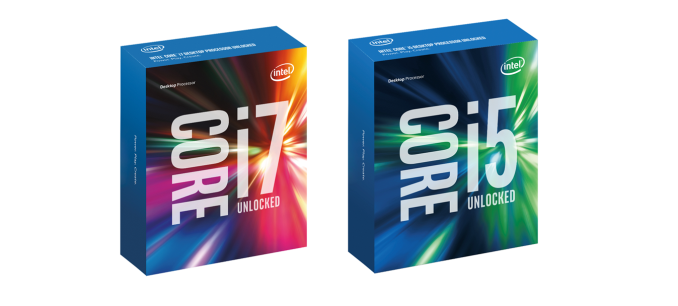
It’s the Intel review you’ve been waiting for. Today is the launch of the first two CPUs from Intel’s Skylake architecture, the 6th Generation Core i7-6700K and the Core i5-6600K. With the new processors we get a new architecture, a new socket, the move to DDR4 and the potential to increase both performance and efficiency at the same time. A lot of readers have asked the question – is it time to upgrade? We had a CPU or two in to test to answer that question.
Launch Day for Skylake-K: August 5th
For those in the industry, predicting Skylake’s launch has been a minefield. Even at Computex in June, some companies were discussing a large six-week window in which they expected Skylake but were waiting on official dates. But as we've seen with a number of previous Intel mainstream launches, Intel likes to aim at the gaming crowds release at a gaming events. It just so happens that today is Gamescom in Germany, two weeks before what everyone expected would be a launch at Intel’s Developer Forum in mid-August.
Today is a full launch for the Skylake-K processors, with the two CPUs being launched alongside new Z170 series motherboards and dual channel DDR4 memory kits. Having spoken to a few retailers, they have stock ready to go today. That being said, a number of them would have liked more stock on launch day, suggesting that they expect the processors to sell out rather quickly when the buy buttons are activated.
All the motherboard manufacturers should be ready to go as well – take a look at our breakdown of the retail motherboard information we could get before launch for a good overview of what to expect this generation. DDR4 manufacturers have been selling the new standard of memory for over a year due to Intel’s high-end X99 platform supporting it, but today will see the introduction of dual channel kits to go with the Skylake platform as well as a number of higher speed modules ready and waiting.
‘Where are the non-K processors?!’ you may ask. Intel tells us that these will be released later in the year, sometime in Q3. As a result, we have to wait and see what range of models come out at that point and we will get a number in to review.
Retail Packaging
To go with the launch is a new look of Intel's Core processor packaging, in part to appeal to the gaming crowd. As the gaming industry is considered one of the few remaining areas for potentially large growth in the PC industry, Intel is increasing its focus on gaming as a result.
Aside from changing the graphics on the box, it has been reported – and seemingly confirmed by the thinner boxes in the official pictures from Intel – that these processors will not be shipped with a stock Intel cooler. Users will have to purchase third party coolers. Part of this makes sense – overclocking processors need beefier cooling in order to extract the maximum overclock and buying something above the stock cooler should be good. The downside of not having a stock cooler means an added cost to the end user. However as the hole mounting for the new socket, LGA1151, is similar to that of LGA1150/1155/1156 – spacing is still 75mm – many existing CPU coolers for the current LGA115x sockets should be compatible, making it possible to reuse many coolers for no more than the cost of a new thermal paste application.
For users looking for a new air or liquid cooler, head on over to our recent roundup of Top Tier CPU Air Coolers Q3 2015: 9-Way Roundup Review and the Closed Loop AIO Liquid Coolers: 14-way Mega Roundup Review published last year.
The Skylake CPUs: Intel’s 6th Generation Core
Intel’s tick-tock strategy has been the bedrock of their application to bring new processors to the market, growing in terms of user experience for either power, efficiency, or both. It has been noted that certain generations either have an enterprise focus or a mobile-first focus, which always seems to tip the scales in one direction of the other. However, with the recent announcement of a third CPU line at 14nm called Kaby Lake for 2016, tick-tock just became tick-tock-tock.
| Intel's Tick-Tock Cadence | |||||
| Microarchitecture | Process Node | Tick or Tock | Release Year | ||
| Conroe/Merom | 65nm | Tock | 2006 | ||
| Penryn | 45nm | Tick | 2007 | ||
| Nehalem | 45nm | Tock | 2008 | ||
| Westmere | 32nm | Tick | 2010 | ||
| Sandy Bridge | 32nm | Tock | 2011 | ||
| Ivy Bridge | 22nm | Tick | 2012 | ||
| Haswell | 22nm | Tock | 2013 | ||
| Broadwell | 14nm | Tick | 2014 | ||
| Skylake | 14nm | Tock | 2015 | ||
| Kaby Lake (link)? | 14nm | Tock | 2016 ? | ||
Intel’s early issues with 14nm yields have been well documented and we won’t go into them here, but 14nm is a more expensive process with an increased number of lithography steps as we reach the limits of current semiconductor technology. FinFET was introduced back in 22nm, but to move down to 10nm makes either the current process more expensive or other methods have to be used. As a result, we see Moore’s Law stretching out from an 18-24 month cadence to a 24-30 month cadence for the first time in fifty years. As we’ve seen with the graphics card market recently stalling at 28nm, there is a need (or at least opportunity) to develop more power efficient architectures rather than just relying on die shrinks to do it for you.
Future development aside, today Skylake will hit the shelves in the form of two overclockable processors, the Core i7-6700K and the Core i5-6600K.
| Intel i7 Lineup | |||
| i7-4770K | i7-5775C | i7-6700K | |
| Price | $339 | $366 | $350 |
| Cores | 4 | 4 | 4 |
| Threads | 8 | 8 | 8 |
| Base CPU Freq. | 3.5 GHz | 3.3 GHz | 4.0 GHz |
| Turbo CPU Freq. | 3.9 GHz | 3.7 GHz | 4.2 GHz |
| Graphics | HD 4600 (GT2) | Iris Pro 6200 (GT3e) | HD 530 (GT2) |
| EUs | 20 | 48 | 24 |
| iGPU Freq. | 1250MHz | 1100MHz | 1150MHz |
| TDP | 84W | 65W | 91W |
| DDR3/L Freq. | 1600MHz | 1600MHz | 1600MHz |
| DDR4 Freq. | - | - | 2133MHz |
| L3 Cache | 8MB | 6MB | 8MB |
| L4 Cache | None | 128MB (Crystal Well) | None |
| Interface | LGA1150 | LGA1150 | LGA1151 |
As with previous nomenclature, the i7 model will be quad core CPU with HyperThreading and 8MB of L3 cache. This matches up with the Haswell parts to which Skylake is more closely aligned (Desktop Broadwell is rather a blip, using an external on-package eDRAM and you can read our review here), in a large number of aspects including the other cache levels. The 6700K runs at a base frequency of 4.0 GHz and an all-core frequency of 4.2 GHz. This is a slight speed bump over the 4770K which was launched at the start of Haswell, but a minor reduction in clockspeeds compared to the i7-4790K, which was an upgraded Haswell part launched later under the name of ‘Devil’s Canyon’.
The integrated graphics nomenclature has changed, with the new i7-6700K having the Intel HD 530 graphics, compared to the HD4600 in the Haswell parts. We know that the HD 530, like the HD 4600, has 24 of Intel’s execution units in the iGPU, and they run at a peak frequency of 1150 MHz. The introduction of the HD 530 marks the launch of Intel’s 9th generation graphics, and we'll cover Gen9 in a bit more detail later.
| Intel i5 Lineup | |||
| i5-4670K | i5-5675C | i5-6600K | |
| Price | $242 | $276 | $243 |
| Cores | 4 | 4 | 4 |
| Threads | 4 | 4 | 4 |
| Base CPU Freq. | 3.4 GHz | 3.1 GHz | 3.5 GHz |
| Turbo CPU Freq. | 3.8 GHz | 3.6 GHz | 3.9 GHz |
| Graphics | HD 4600 (GT2) | Iris Pro 6200 (GT3e) | HD 530 (GT2) |
| EUs | 20 | 48 | 24 |
| iGPU Freq. | 1200MHz | 1100MHz | 1150MHz ? |
| TDP | 84W | 65W | 91W |
| DDR3/L Freq. | 1600MHz | 1600MHz | 1600MHz |
| DDR4 Freq. | - | - | 2133MHz |
| L3 Cache | 6MB | 4MB | 6MB |
| L4 Cache | None | 128MB (Crystal Well) | None |
| Interface | LGA1150 | LGA1150 | LGA1151 |
The i5 model for Skylake also has quad cores, but without HyperThreading and only 6MB of L3 cache. Like the i7, it also has the Intel HD 530 graphics but operates at a lower frequency band.
Both the Skylake processors will support DDR4 and DDR3L memory in order to ease the transition to DDR4 for the mainstream segment, although it should be said that DDR3L is implemented here due to its lower than standard DDR3 operating voltage of 1.35 volts. This more closely aligns with DDR4’s standard voltage of 1.20 volts or the high end DDR4 kits at 1.35 volts, and as a result we are told that motherboards that support DDR3L will typically only be qualified to run DDR3L kits, rather than DDR3 kits.
This leads onto the point that both of the K processors for Skylake sit at 91W, which is a small increase over Haswell at 84W and Devil’s Canyon at 88W. In the past Intel has historically run a 1:1 policy whereby a 1% performance gain must come at a maximum of a 1% power penalty – this was adjust to 2:1 for Broadwell, and we should assume that Skylake had similar requirements during the planning stage. Depending on the specific architecture details, one potential source for this increase in power consumption may be the dual memory controller design, although Skylake has a significant number of features to differentiate itself from Haswell.


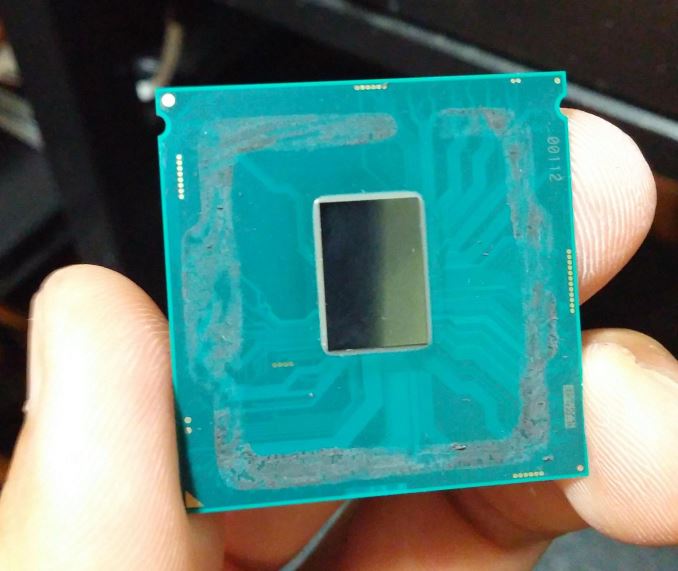
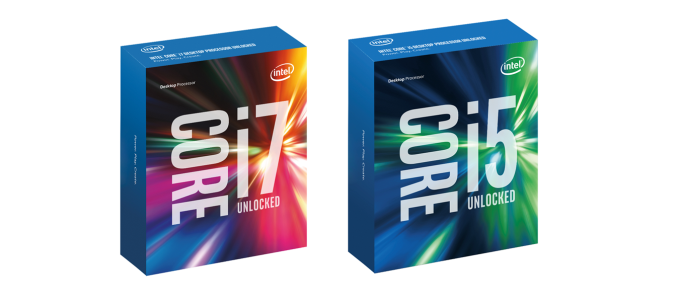
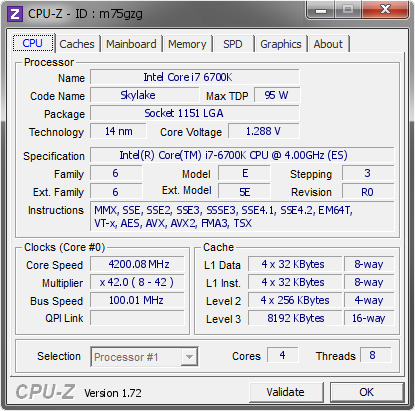
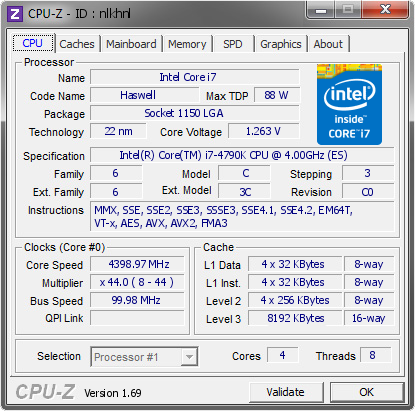
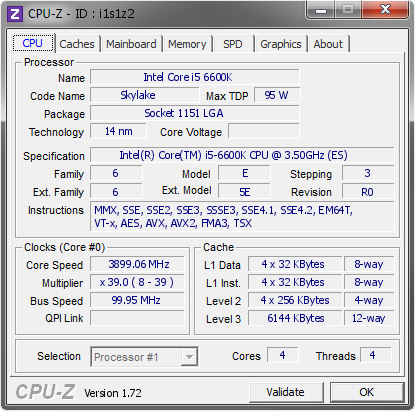
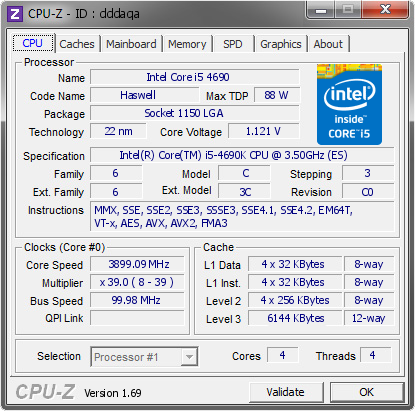








477 Comments
View All Comments
halcyon - Thursday, August 6, 2015 - link
Remember the time, when you could OC 50% or even 100% higher frequency on your CPU?Or the time, when every single c. 1.6 year cycle would bring you at least 50% performance increase?
Those times are over.
I'm still running 4-core(8HT)/tri-channel/SATA3/USB3 platform from 2009.
I see very little reason to upgrade, other than tinkering and spending time.
The money is burning in my hand. Intel is refusing to come out with something that is really worthwhile.
Ah well, maybe Skylake-E or maybe Cannonlake-E, or maybe...
I've been waiting to upgrade for a long time (and have upgraded my GPU several times, as there at least I get some bang for my buck).
Bambooz - Friday, August 7, 2015 - link
I remember my Core 2 Duo E4300 (1.8GHz) that ran at 3.2GHz (400MHz FSB *8) for most of it's life till I replaced it with a Core 2 Quad Q6600 (2.4GHz) that ran at 3.6GHz (400MHz FSB *9). Those were the days when OCing was actually a fun thing to do.. till intel fucked everyone over by making you pay for CPUs that can be OCed or not have any meaningful OC at all.watzupken - Thursday, August 6, 2015 - link
Come to think of it, the comparison of the i7 processor actually put Skylake i7 6700K in an unfavorable position. Honestly, I am more keen to get a Broadwell i7 5775C if I am looking to upgrade. The significantly better graphics, lower TDP and L4 cache seems like a better deal to me. Clockspeed is no big deal since the i7 5775C is overclocking unlocked if I am not mistaken.I think Intel just messed themselves up by launching the desktop variant of Broadwell with Crystal lake graphics just ahead of Skylake.
yhselp - Thursday, August 6, 2015 - link
Thank you for the review. You place a lot of emphasis on gaming and overclocking, value for money, upgrading from SB, and rightly so; however, there are no gaming benchmarks with an overclocked Skylake CPU to illustrate that point -- it would be particularly interesting to see how an i5-6600K@4.5Ghz (assuming it can reach that) fares as that would be most representative of this market.All that Sandy Bridge gamers see now is a 0.9fps to 5.8fps (excluding GRID) improvement which can't possibly justify the price of a new CPU, motherboard and memory.
MiSt77 - Thursday, August 6, 2015 - link
I would like to argue, that it's a little bit too early for the the authors' assertion, that Skylake only gives meagre performance improvements over Broadwell (and earlier processors).Considering that Skylake does in fact feature one big, if not ground breaking, improvement in that (with AVX-512) programmers now have thirty-two¹ 512-bit registers at their disposal, I think Skylake-optimized software should - at least for algorithms amenable to SIMD optimizations - be able to deliver considerable performance improvements.
In this regard it would be interesting to know, if any of the tested software already comes with proper AVX-512 support (or not, as I suppose) - regrettably, there is not even a single mention of this in the benchmark section ...
¹ That is, twice as many as before, which also should help optimizing compilers, as it reduces register pressure.
SuperVeloce - Thursday, August 6, 2015 - link
Um, no. As far as we know, only xeons will get avx-512 enabled.MiSt77 - Thursday, August 6, 2015 - link
Thank you for this factual correction!To my dismay I have to admit that you are right: AVX-512 will only be offered on (some?) Xeon models. As I'm one of those, who where waiting for Skylake specifically because of AVX-512, I find this very disappointing: thanks for ruining my day, Intel.
On the other hand, with the E3-1535M v5 and E3-1505M v5 two (mobile) Xeons were announced recently; maybe my dream of an (AVX-512 enabled) notebook can still become a reality ...
Da W - Thursday, August 6, 2015 - link
Yeee! I'll be able to keep my i7 4770k for at least a decade without upgrading!Time to spend that money on a surface pro 4, a new phone, hololens, whatever else, but my desktop will remain usable!!
Big change from the 90s :)
TheGame21x - Thursday, August 6, 2015 - link
My Core i5 2500k is still chugging along nicely at 4.2 GHz so I think this'll be another generation I'll be skipping. The cost of buying a new motherboard and RAM alongside the new CPU is a bit more than I'm willing to spend as of now given the performance increase.sweeper765 - Thursday, August 6, 2015 - link
Another Sandy Bridge owner here (2500k @ 4.6GHz 1.27v load).I've been waiting for a worthwhile upgrade. This is close but i'm not yet convinced.
The ipc improvements and new instructions are attractive but there are some negative points too:
- hotter, always hotter. Why no temperature analysis ? I see from other reviews temps in the high 80's with water cooling setups. Is this was passes as normal these days?
- need to buy DDR4 besides cpu and motherboard. I see there is a strong push towards this, despite having no real benefit relative to DDR3 (same bandwidth at the same frequency). Basically it's a kind of high frequency DDR3L. Please don't say it saves power, it's only a few watts less than ddr3 at best.
- why is stock voltage so high for 14nm technology? It's higher than my oc voltage on a 32nm 4 years old cpu. Power consumption in load is also pretty high.
- i was hoping for avx3
- cannot install win7 from usb are you kidding me? I don't have an optical drive and was doing fine without it for years now
- price goes up from generation to generation. 2600k launched at 317$, 6700k at 350$
- connectivity wise i would have liked to see more usb on back panel and more internal sata , especially with sata express consuming 2 standard ports.